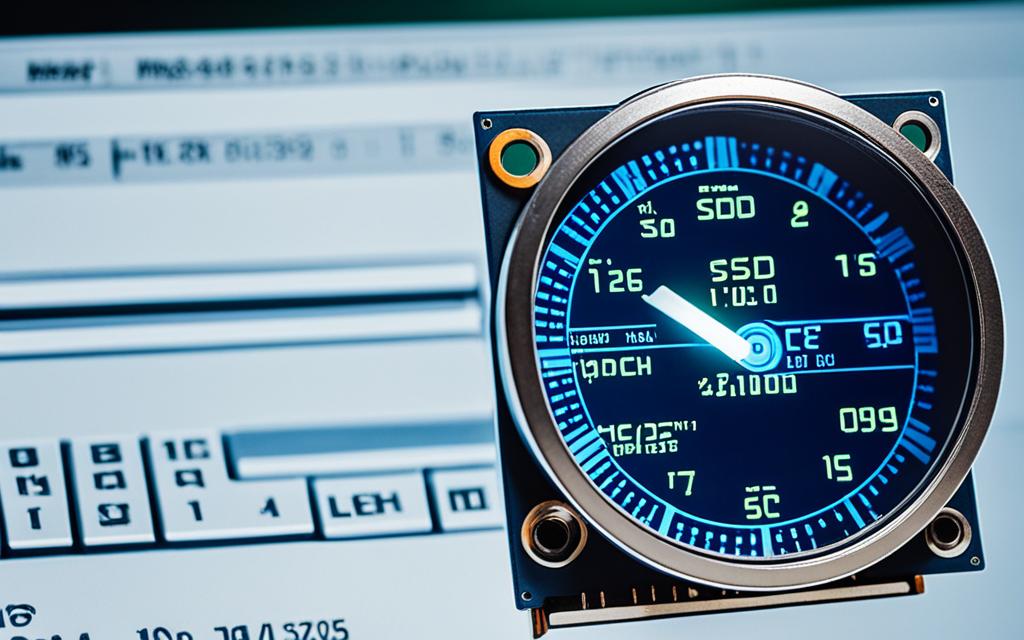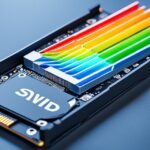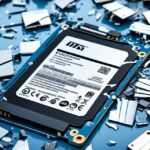Table of Contents
Is using CHKDSK on solid-state drives (SSDs) a good idea? This question often arises among users. As a classic tool for hard disk drives (HDDs), its suitability for SSDs is debated. Critics worry it might cause problems, especially on the C drive. However, CHKDSK mainly reads data and seldom writes, making it largely free from harming SSD performance1. Yet, since SSDs have built-in systems for fixing errors2, some wonder if CHKDSK is really needed. It’s important to weigh the effects of running CHKDSK on SSDs against using other tools designed for these modern drives.
Key Takeaways
- CHKDSK may not be necessary for maintaining SSDs due to their advanced error handling capabilities.
- Running CHKDSK on SSDs is often associated with user concerns and potential issues post-operation.
- Alternative tools like EaseUS Partition Master and MiniTool Partition Wizard can be better suited for SSD health checks.
- Using CHKDSK on the C drive may lead to specific startup issues based on user feedback.
- Understanding the underlying technology of SSDs is crucial for effective maintenance.
Understanding the Role of CHKDSK
The CHKDSK utility is a vital disk repair tool for Windows. It performs disk scanning and repairs on file systems. This utility finds and fixes several errors, from minor glitches to major issues. Its role is key in keeping data safe, especially on older hard disks and sometimes on solid-state drives too.
What is CHKDSK?
CHKDSK stands for “Check Disk.” It’s a command-line tool that spots and mends file system errors. With commands like /F and /R, it tackles error correction. Using CHKDSK helps dodge system crashes and data losses. Running this tool regularly is wise, especially on Windows 10 and earlier systems3.
How CHKDSK Works
CHKDSK begins by examining the disk for any irregularities. It uses options like /X, which might dismount the volume for repairs. The duration of CHKDSK varies, based on hardware age and size3. For accurate results, the /F command is best. However, users must proceed with caution to avoid losing files, especially in damaged sectors4
Does CHKDSK Work on SSDs?
People often ask if CHKDSK is safe and effective for SSDs. It’s important to understand how this tool works with the latest storage tech. This understanding helps to know what it can and cannot do.
Safety of Running CHKDSK on SSDs
Using CHKDSK on SSDs is safe. It won’t harm the drive1. CHKDSK mostly reads data, which has little effect on SSD performance1. Though it’s safe, running CHKDSK too much is unnecessary. Most SSDs handle problems on their own without needing CHKDSK.
Limitations of CHKDSK on SSDs
However, CHKDSK isn’t perfect for SSDs. It might miss errors tied to the SSD’s controller or firmware1. While CHKDSK checks for consistency, it cannot recover lost data1. SSDs have features like wear-leveling and TRIM. These features fix and boost performance better than CHKDSK can5.
CHKDSK vs Defragmentation for SSDs
CHKDSK and defragmentation have different effects on SSDs, which need special care. The rise of SSD technology means we must rethink old maintenance strategies. For SSDs, defragmentation is not recommended because it can harm the drive. It reorganises data to work better, but damages SSDs by writing too much. This not only wears down the SSD but might also shorten its life. So, it’s not needed for the newer SSDs.
Why Defragmentation is Harmful to SSDs
Defragmentation doesn’t help SSDs like it does HDDs. For SSDs, being scattered doesn’t slow them down much. Defragmentation could lower an SSD’s life and effectiveness. Microsoft warns that defragmentation hurts SSDs. It uses up the SSD’s “write cycles” fast.
This makes the SSD get old before its time6. Also, SSDs are already built to stay fast without defragmentation. So, doing it risks damage for no good reason.
CHKDSK vs Defragmentation: The Key Differences
CHKDSK is about fixing errors with little writing, saving the SSD from harm. It checks files and repairs them without lots of writing like defragmentation7. Remember, CHKDSK is mostly reading, which is much safer for SSDs8. Knowing how defragmentation and CHKDSK differ helps us care for SSDs better, keeping them running well for longer.
Monitoring SSD Health without CHKDSK
Keeping your SSD in top shape is vital for its speed and life. There are various tools beyond CHKDSK that provide deep insights into your SSD’s wellness. These tools show how well your SSD works and flag any possible issues.
Alternative Tools for SSD Management
There are many applications to help check SSD health. Programs like CrystalDiskInfo and Hard Disk Sentinel are great for tracking SMART parameters. They give a true picture of SSD condition, offering reassurance without solely relying on CHKDSK. Downloading tools from the SSD manufacturer’s site is highly recommended9.
Reports show using these specific programs is better than generic options9.
Understanding TRIM and Its Importance
The TRIM command is key for SSD upkeep. It tells the SSD which data blocks to erase, making space for new data. This keeps the SSD running efficiently, boosting its performance over time. It’s a must to have TRIM on for good SSD health.
Labels for SSD health features may vary by maker, which can be confusing10. To keep your SSD at its best, it’s wise to use both TRIM and other monitoring tools effectively.
Conclusion
Looking into how CHKDSK works with SSDs shows us that using CHKDSK is mostly safe but not really needed for SSDs to work best11. CHKDSK is good at finding and fixing logical mistakes. Still, there’s a risk of losing data after running it, which can be tricky for those not too tech-savvy.
To take good care of your SSD, it’s better to use its built-in TRIM function and other software like EaseUS Partition Master12. These tools help check for errors and keep an eye on your SSD’s health without the complications CHKDSK brings. With SSD prices getting lower, it’s easier now to use these advanced programs.
In the end, while CHKDSK has its uses for SSD care, we suggest looking into easier and more reliable options to keep your solid-state drives in top shape. Regular checks and the right tools can help you avoid data loss and keep your SSD running well13.
FAQ
Can I run CHKDSK on my SSD?
Yes, you can use CHKDSK on an SSD, and it’s usually safe. CHKDSK does more reading than writing, reducing the wear on your SSD.
Will running CHKDSK improve the performance of my SSD?
CHKDSK doesn’t really boost SSD performance. SSDs already have error-correcting features that often fix problems themselves, making CHKDSK less necessary.
How does CHKDSK differ in functionality between SSDs and HDDs?
CHKDSK aims to fix disk errors. However, its effectiveness is lesser on SSDs because of their modern tech. SSDs, with TRIM and wear-leveling, naturally manage themselves well without frequent checks.
What should I avoid doing with my SSD?
Don’t defrag your SSD. It involves a lot of writing, which can wear out the drive faster. Instead, use tools made for checking SSD health.
Are there alternative tools to monitor SSD at health besides CHKDSK?
Indeed. Programs like Hard Disk Sentinel offer thorough diagnostics. They help you monitor your SSD’s health and performance without CHKDSK.
What is the TRIM command and why is it important for my SSD?
The TRIM command is vital for keeping SSDs fast. It lets the SSD know which blocks of data aren’t needed, leading to more efficient writing and better performance.
How can I maintain my SSD’s longevity?
To keep your SSD in great shape, turn on TRIM, use SSD-specific monitoring tools, and avoid unnecessary writing. Regular health checks can also spot issues early.
Source Links
- https://www.easeus.com/computer-instruction/run-chkdsk-on-ssd.html – How to Run CHKDSK on SSD [2024 Most Efficient Ways]
- https://www.minitool.com/partition-disk/chkdsk-on-ssd.html – Is It Safe to Run CHKDSK on SSD | How to Check SSD Effectively – MiniTool
- https://www.avg.com/en/signal/how-to-use-chkdsk-windows – How to Use CHKDSK Commands to Scan and Repair Hard Drives in Windows
- https://www.easeus.com/partition-manager-software/run-chkdsk-to-check-repair-drive.html – CHKDSK /F /R/X Command to Fix Hard Drive Errors Win 10/11
- https://www.avast.com/c-chkdsk-windows – How to Use CHKDSK to Repair & Fix Windows Hard Drives
- https://www.pcworld.com/article/406367/when-to-check-defrag-and-optimize-storage-devices.html – When to defrag a hard drive, TRIM an SSD and perform other storage tasks, or not
- https://askleo.com/should-i-run-chkdsk-on-my-ssd/ – Should I Run CHKDSK on My SSD?
- https://hdsentinel.com/blog/chkdsk-on-ssd – CHKDSK on SSD – 3 Easy Solutions if You Have Problems
- https://learn.microsoft.com/en-us/answers/questions/1335069/how-to-check-my-hard-disk-health – how to check my hard disk health – Microsoft Q&A
- https://askubuntu.com/questions/325283/how-do-i-check-the-health-of-a-ssd – How do I check the health of a SSD?
- https://www.ubackup.com/data-recovery-disk/does-chkdsk-delete-files-0616.html – Does CHKDSK Delete Files? Recover Data Deleted By It Easily
- https://www.easeus.com/partition-master/check-ssd-for-errors.html – 3 Efficient Ways to Check SSD for Errors on Windows 10/11
- https://www.minitool.com/data-recovery/chkdsk-f-or-r.html – CHKDSK /F or /R | Difference Between CHKDSK /F and CHKDSK /R – MiniTool








